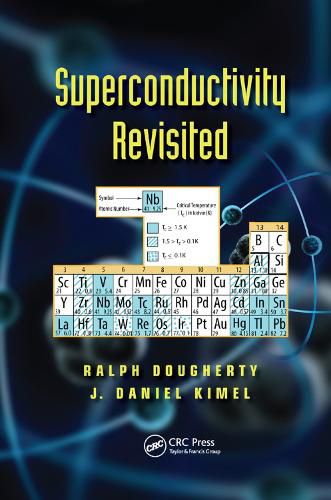Readings Newsletter
Become a Readings Member to make your shopping experience even easier.
Sign in or sign up for free!
You’re not far away from qualifying for FREE standard shipping within Australia
You’ve qualified for FREE standard shipping within Australia
The cart is loading…






While the macroscopic phenomenon of superconductivity is well known and in practical use worldwide, the current theoretical paradigm for superconductivity suffers from a number of limitations. For example, there is no currently accepted theoretical explanation for the pattern of superconductor critical temperatures in the periodic table. Historical developments in condensed matter were strongly focused on the similarities of all metals and the electron gas model, with little attention paid to their real differences. Accessible by a wide audience, Superconductivity Revisited explores the work of those who investigated the differences, and laid the foundation for all current and future work.
Topics Include
Pattern of Elemental Superconductors in the Periodic Table
High-Temperature Superconductors
Electron Spin in Superconductors
Heat Capacity and Magnetic Susceptibility in Superconductors
Quantum Foundations of Molecular Electricity and Magnetism
Metals and Insulators
Electron Transport in Metals
Magnetoresistance
Quantum Hall Effect
Type I and Type II Superconductivity
Superconductivity Revisited starts from the foundations and shows that the current theory of the subject cannot explain the pattern of superconductors in the periodic table, as the theory depends on a theory of resistivity not congruent with the Sommerfeld equation. Partial wave scattering is introduced as a route to deal with these issues. The book develops a theory of superconductivity that includes the periodic table. The new, coherent, understandable theory of superconductivity is directly based on thermodynamics, scattering theory, and molecular quantum mechanics.
$9.00 standard shipping within Australia
FREE standard shipping within Australia for orders over $100.00
Express & International shipping calculated at checkout
While the macroscopic phenomenon of superconductivity is well known and in practical use worldwide, the current theoretical paradigm for superconductivity suffers from a number of limitations. For example, there is no currently accepted theoretical explanation for the pattern of superconductor critical temperatures in the periodic table. Historical developments in condensed matter were strongly focused on the similarities of all metals and the electron gas model, with little attention paid to their real differences. Accessible by a wide audience, Superconductivity Revisited explores the work of those who investigated the differences, and laid the foundation for all current and future work.
Topics Include
Pattern of Elemental Superconductors in the Periodic Table
High-Temperature Superconductors
Electron Spin in Superconductors
Heat Capacity and Magnetic Susceptibility in Superconductors
Quantum Foundations of Molecular Electricity and Magnetism
Metals and Insulators
Electron Transport in Metals
Magnetoresistance
Quantum Hall Effect
Type I and Type II Superconductivity
Superconductivity Revisited starts from the foundations and shows that the current theory of the subject cannot explain the pattern of superconductors in the periodic table, as the theory depends on a theory of resistivity not congruent with the Sommerfeld equation. Partial wave scattering is introduced as a route to deal with these issues. The book develops a theory of superconductivity that includes the periodic table. The new, coherent, understandable theory of superconductivity is directly based on thermodynamics, scattering theory, and molecular quantum mechanics.